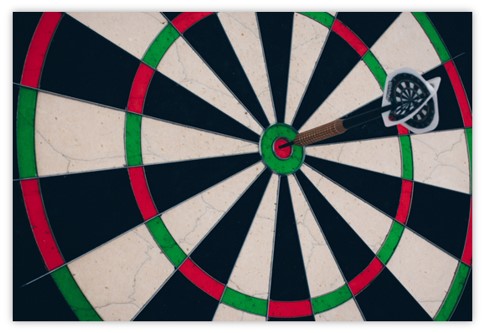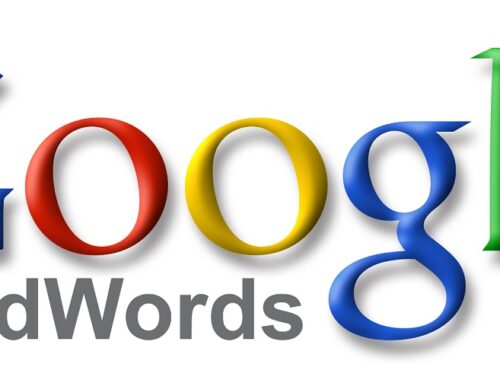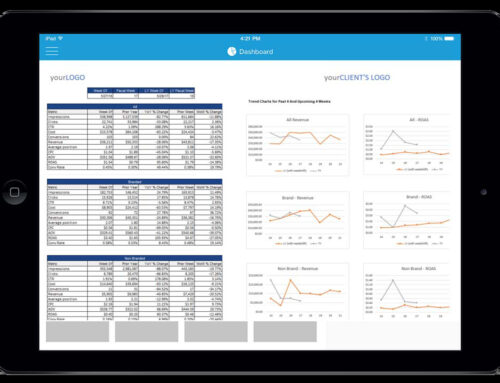With rapidly evolving technology, the digital marketing landscape is growing at a faster pace than ever. To keep up with the constant changes, you need to be updated with marketing trends and make strategies for changes most likely to happen shortly. One such change that is already announced will be activated on June 30, 2022, where you will no longer be able to create or edit expanded text ads. Google strongly encourages the transition to responsive search ads (RSA). Although expanded text ads will continue to serve, responsive search ads will now be the default campaign type in Google ads.
Why this change/update in expanded text ads?
According to Google, the goal of this change is to simplify the way you create search ads and make it easier for you to drive performance with automated tools. Responsive search ads help you compete in various relevant auctions by delivering ads that adapt to the appropriate message for the relevant query. It would help increase conversion rate, as comparably, you have to create fewer ads and have more time to work on PPC strategies to get the best result for your ad campaign.
When you switch from expanded text ads to responsive search ads with the same ad assets, you get to see 7% more conversions at a similar cost per conversion. With Google’s machine learning, the responsive ads combine with the artificial intelligence techniques and will help to show more relevant ads to the maximum number of users.
With ETAs, you had to write more ads as there were more ad groups involved and less time was given to optimize the ads. Especially with small budget PPC ad accounts, this was problematic where limited data were available to evaluate the campaign performance. With responsive ads, you have to run a few ads, which means more time would be available to improve the ads’ performance, thus saving time and money for your ad campaign.
What are responsive search ads
The world of paid advertising has evolved significantly, with many new tools and features now offering advertisers more dynamic ways of reaching their target audiences. One of the most significant changes in Google ads was the introduction of responsive search ads. Responsive search ads are a type of Google PPC ad that allows advertisers to create an ad campaign that adapts to show more text and display more relevant messages to the users.
Responsive search ads are text ads that allow you to enter multiple headlines and descriptions. According to the search query, Google’s machine learning will test, learn, and optimize for the best performing combination. Google responsive ads fit across any device and allow you to reach the maximum number of relevant audiences. Earlier, this was restricted to two headlines and a single 80- character description line. In a static ad, this headline and description would be displayed to every viewer that sees your ad. However, with responsive ads, you can create a maximum of 15 different headlines and 4 different description lines.
With the launch of responsive search ads by Google, now a wider scope of ad creativity is available. Now you can create:
- Three separate headlines of 30 characters each.
- Two separate description lines with a character limit of 90 characters each.
Expanded text ads are a type of PPC ad which will now be functional by default with Google responsive search ads. Some of the advantages of Google responsive search ads are:
- Flexible – These responsive ads have a significant advantage that they are flexible. With these responsive ads, Google’s machine learning adjusts to what works for a given audience and displays the most relevant ad to the users.
- Targeted – In Google PPC ads, the prime focus is to keep the ads targeted so that your ad budget does not get wasted. Through Google machine learning it targets the users according to their intent and past behavioral data.

- Automated – Before responsive search ads, there were variations of Google PPC ad created and then manual a/b testing was performed to figure out what worked the best. With responsive search ads, the manual testing process got automated thus saving time and also improving the performance of the ad group.
- Expansive – Another benefit of responsive search ads is that they provide you with more space to convey your message. You can consider adding high-traffic keywords, add negative keywords (to trigger ads to the irrelevant user), include CTAs in the headline or description lines to create a more compelling message for your target audience to click on the ad.
- Versatile – Responsive ads adjust themselves to appear across any device, thus providing you with the opportunity to target a vast number of relevant audiences. With the flexibility to enter headlines and description with more space, responsive ads allow you to match various search queries compared to traditional text ad that was displayed to a smaller set of search queries.
Best practices for responsive search ads

- Use increased character limit – The character limit for Google expanded text ads have now increased to 90 characters for each description. The increased character limit provides more room to convey your messages to the relevant audience. Now you have the option to add more descriptions about the product or services you are providing. You need to make sure that you utilize each and every character to the maximum. When writing ad copies, every word counts and the description or headline should be appealing so that the user clicks on the ad. You can even consider updating your ad and is a significant advantage provided by Google Ads.
- Prioritize the headline – “The first impression is the last impression”, so you should always prioritize the description that you consider writing in the headline. In PPC advertising, the headline that you write is read first by the users and you should always focus on writing great content for it. The first line should provide the details about your product or services so that the target audience is interested in making a click on your ads.
The headline should refer to the content on the landing page. You should focus on targeting the keywords that convert. The landing page should match the user’s intent so that the user ends up taking the intended action. You should focus on writing standalone headlines, thus increasing the click-through rate.

- Develop ads for every device – With Google expanded text ads, you can reach users across any device from desktops, mobiles to tablets. To make sure maximum users across all devices see your Google expanded text ads, you need to optimize the landing page for every device. If you write exceptional Google expanded text ad description, but the ad is not optimized to appear across various devices, you may miss out on a vast number of potential customers.
As the number of mobile phone users is increasing, you first need to work on developing a mobile-friendly landing page so that the relevant users can view the ad 24/7 around the globe. On July 1, 2019, Google launched mobile-first indexing, stating that it would predominantly use the mobile version of the content for indexing and ranking. So, to improve ad rank and position, you need to make sure that your ads have mobile-first indexing. To make your ads appear across various devices, you need to optimize images, include short-engaging videos, etc., to increase traffic on the landing page.

- Use keywords in the display URL path – Keywords are the linking bridges that display the results on search terms entered by the user and help the relevant audience reach your landing page. You need to create a relevant display URL path that features your targeted path. Adding relevant keywords to your display URL shows that the ad is relevant, thus helping to increase the traffic on the landing page.
You should conduct keyword research to know more about the users’ intent, what terms they use for products or services online. This provides proper insight into the audience activity. You can work on PPC strategies to improve the performance of your ads. When working on Google expanded text ads, you can combine your display URL with up to two new optional “Path” fields. Google responsive ads will combine the domain from your final URL and show it as your PPC ad’s display URL.

- Use ad extensions – Ad extensions are another important factor to consider when you start working on PPC advertising. Ad extensions are used to provide extra details about your ad campaign, thus giving visitors more reasons to choose your business. Ad extensions solve the age-old problem of having limited characters in the headlines and descriptions of the ad copies. In PPC advertising, these ad extensions have loads to say and finally increase leads down the conversion funnel. You need to make sure that these extensions are not redundant with your original ad. If your ad extension overlaps the actual content, then the chances of users leaving the landing page increases. You need to work on creating engaging ad extensions to increase the trust of users and increase the performance of your PPC ads.
What’s next to focus on
Below are the next steps to focus on to make sure that you are prepared for automated changes and make sure that the ultimate goal of PPC advertising for your business is not disturbed.
- Check your Google expanded text ads in display campaigns to see updates in your account.
- If ads have already been updated, you can add long headlines, long descriptions, etc.
- Use the available character spaces especially in the long headline to make formatting appear intentional.
- You can edit images, add different ad copy and include a logo to increase brand awareness.
- If none of your expanded text ads have been updated you can consider changing these to Google responsive ads to avoid automated changes.
- Perform a/b testing regularly to increase impressions, improve user engagement, increase conversions, etc.
Changes for advertisers to work on
As discussed above, advertisers will no longer be able to create new expanded text ads or edit existing expanded text ads in Google Ads. According to an announcement by Google, “Your existing expanded text ads will continue to serve alongside responsive search ads and you’ll still see reports on their performance. From now on, you will also be able to pause and resume your Google expanded text ads and even remove the ads if needed.
Expanded text ads will not completely be removed, but the point is with Google PPC you would not have a default option for this. When it comes to Google PPC ad, you will have to set it up in responsive search ads (RSA) to start advertising. You will now have to work on different tools like display network and others to maximize the performance of your responsive search ads. You need to utilize watching the “ad strength” indicator and continue personalization features such as location and countdown customizers.
You need to focus on the fact that not only you won’t be able to create ad but even edits to the already running ads will be considered as deletion. So, the best practice here would be to consider adding expanded text ads in transition to responsive search ads. You should focus on testing and improving responsive search ads with the new norms. Just in case expanded text ads are completely removed in the future, ensure that every ad group has a responsive search ad and work on writing ad copies that best suit your business. Some points that you may consider are:
- Place headlines or descriptions to specific positions in your responsive search ads.
- Repurpose high-performing content from your expanded text ads and focus on ad strength.
- Consider evaluating the performance of your ads based on number of clicks, conversion rate and various other PPC metrics.
Round off
With the change on expanded text ads set to take place, you need to take the necessary steps and focus on essential points like headlines, descriptions, display URL, etc. You should prepare a PPC report for responsive search ads to figure out which ad variant is performing better. Many brands focus on advertising on the largest search engine and rely on Google Ads for brand awareness, increasing traffic, etc. and expanded text ads were definitely an added feature to it. But, with this announcement, many advertisers may feel what next steps are to be taken. To have the best advantage of this change, you can get in touch with a digital marketing company with expertise in lead generation, PPC audit, search ads, video ads, mobile ads, display ads, etc. and increase sales for your business.
References
-
306, 2024Understanding Google’s preference for crawling high-quality content
Crawling websites is [...]
-
2905, 2024All you should know about third-party cookies by Google
Cookies have revolutionized [...]
-
2405, 2024Helpful content update by Google to enhance website ranking
Google launched a [...]





Leave A Comment